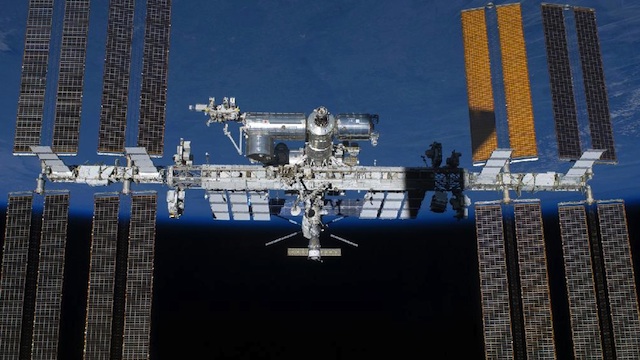SUMMARY
This is AI generated summarization, which may have errors. For context, always refer to the full article.

WASHINGTON DC, USA – The $100-billion International Space Station will be extended by four years, or until at least 2024, allowing for more global research and scientific collaboration, NASA said Wednesday, January 8.
The orbiting outpost, the largest space lab ever built, was launched to fanfare in 1998 and had been expected to remain in operation until 2020.
“What a tremendous gift the administration has given us to go look at extending this space station,” said William Gerstenmaier, associate administrator for NASA’s Human Exploration and Operations Mission Directorate.
Science on the station ranges from studying drug-resistant bacteria, to probing the origins of the universe, to examining how people may one day venture deeper into space, perhaps to Mars, he said.
“We want to push out beyond low-Earth orbit. We are going to have to use this small foothold called the International Space Station to go do that. This is our only opportunity.”
The station has more living space than a six-bedroom house and comes complete with Internet access, a gym, two bathrooms and a 360-degree bay window offering spectacular views of Earth.
Partnering agencies are NASA, the Russian federal space agency Roscosmos, the Canadian Space Agency (CSA), the European Space Agency and the Japan Aerospace Exploration Agency (JAXA).
The entire structure of the ISS is made up of various working and sleeping modules, and extends the length of a football field (357 feet, 109 meters), making it four times bigger than the Russian space station Mir and about five times as large as the US Skylab.
Although it is near-weightless in space, the space station has a mass of 924,739 pounds (420,000 kilograms).
It is maintained by a rotating crew of six astronauts and cosmonauts who have hailed from 14 countries, NASA said.
“People love the International Space Station,” said David Weaver, NASA’s associate administrator for the Office of Communications.
He said this is the second time the life of the station had been extended under the administration of President Barack Obama, and was done based on the science promise that could come from more years in orbit.
“We need a longer planning horizon than we currently have,” Weaver said.
Gerstenmaier said the decision to extend goes until “at least 2024,” and noted “the hardware can last to 2028.”
From the US perspective, he said, the decision would not require any immediate funds or Congressional approval, since the NASA budget has already allowed for ISS activity through 2020.
Funds that were to be used for de-commissioning the station after 2020 will be reapplied for the extension of its life, he said.
The NASA announcement was not immediately echoed by the other global space agencies that are engaged with the ISS, and Gerstenmaier said that might take time.
“This really isn’t a US-only decision. We have talked to our partners about this,” he said.
“They want to go forward with this, it is just working through the government approval, through their individual groups to get where they want to be.”
Gerstenmaier said the costs of maintaining and servicing the station are about three billion dollars per year.
Asked what would happen if other space agencies were unable to contribute, he said: “We are prepared to do what we have to do in case the partners need to take a different path.”
Astronauts and cosmonauts currently gain access to the lab by launching three at a time aboard Russian Soyuz spacecraft.
The Americans’ ability to reach the lab ended in 2011 with the retirement of the 30-year space shuttle program.
However, US companies SpaceX and Orbital Sciences have since succeeded in sending unmanned cargo capsules to the outpost, and new US crew ships are expected to launch in 2017.
The aging structure requires regular maintenance, which is done by astronauts who don spacesuits and venture outside the lab.
One such repair was completed on Christmas Eve when two Americans stepped out to replace a failed ammonia pump that served to cool equipment at the ISS. – Rappler.com
Add a comment
How does this make you feel?
There are no comments yet. Add your comment to start the conversation.